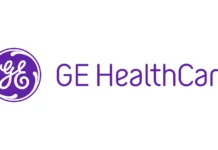Healthcare Market Reports :- TUSTIN, Calif.MicroVention, Inc., a leading developer, manufacturer and marketer of interventional neurovascular devices, announced today that the final 18-month follow-up data in an international study showed that its innovative HydroCoil® Embolic System for treating cerebral aneurysms reduced recurrence and retreatment rates and provided improved outcomes in study patients when compared to bare platinum coils, which are considered the standard of endovascular aneurysm therapy. Cerebral aneurysms are potentially deadly bulges or sacs in the wall of an artery in the brain.
The 500-patient, independently-run, prospective, randomized controlled trial, titled HydroCoil Endovascular Aneurysm Occlusion and Packing Study (HELPS), compared the results from the HydroCoil system to results from bare platinum coils. This multicenter, multinational trial was the first comparative adjudicated study completed since the International Subarachnoid Aneurysm Trial (ISAT) was presented in 2002, and showed an overall improvement in coiling aneurysms, with a substantially lower 1 year 3.0% retreatment rate in HELPS as compared to an 11.3% retreatment rate at 1 year with ISAT. For patients enrolled in HELPS, the HydroCoil technology, based on a microporous expandable hydrogel, proved to be a more durable solution for endovascular occlusion of aneurysms than bare platinum. HydroCoil is a non-bioactive coil that combines the features of greater aneurysm volume filling with biologically inert scaffolding for natural tissue proliferation.
Angiographic results from an independent core lab indicated that there was a statistically significant 8.6% less aneurysm recurrence with HydroCoil than with bare platinum. Data on effectiveness of the HydroCoil extended to all sizes of aneurysms, including small, medium and large aneurysms. Aneurysm sizes in the trial ranged from 2 mm to 25 mm, and 84% of all aneurysms were medium and large in size.
The results were presented by the study’s chief investigator, Philip White, M.D., of Western General Hospital in Edinburgh, Scotland, at the 7th annual meeting of the Society of Neurointerventional Surgery (SNIS) in Carlsbad, CA.
Key results of the trial included:
* HydroCoil had more stable angiographic results with a significant decrease in major remnant/recurrence rates.
* The primary endpoint of reduction of major aneurysm remnant and recurrence, while neutral, showed a strong trend favoring HydroCoil.
* There was a very low overall retreatment rate of 3.5% (2.9% HydroCoil vs. 3.6% Bare Platinum).
* The effect of HydroCoil on major recurrence was superior in ruptured aneurysms and where increased filling by HydroCoil was achieved.
* There was a reduction of 20% in HydroCoil length used as compared to bare platinum. Because of HydroCoil’s ability to expand into the aneurysm, there was higher packing density: 68.3% for HydroCoil and 24.9% for bare platinum.
"These are outstanding results on the safety and effectiveness of HydroCoil, and confirm our belief that HydroCoil is the optimal device for treating a broad spectrum of cerebral aneurysms as compared to bare platinum coils," Richard Cappetta, President and Chief Executive Officer of MicroVention-Terumo said. "It’s also important to note that these positive results were attained on patients with more large and complex aneurysms. HELPS reinforces many previous multi-center and single-center trials, underscoring HydroCoil’s consistency in reducing aneurysm recurrence and retreatment."
The trial protocol did not limit the therapy options, but compared a standard of care that accurately reflects current practice, meaning that physicians could choose to use any manufacturers’ platinum coil as well as stents and/or balloons. "We believe this comprehensive trial design is evidence of our dedication to the clinical studies and science of interventional neurovascular medicine," Cappetta said.
Since the HELPS patient enrollment was completed in 2007, MicroVention has continued to make enhancements to the hydrogel line of coils to compliment HydroCoil, including the HydroSoft® finishing coil that provides hydrogel at the neck of the aneurysm, and the HydroFrame™ framing coil that provides optimal framing with the benefits of hydrogel.
The trial was based in the United Kingdom and managed by the Lothian Health Board with support from the UK’s National Health Service, and a total of 24 worldwide medical centers participated. The Core Lab that independently reviewed the results was CHUM in Montreal, Canada.
About the HydroCoil Embolization System
The HydroCoil Embolization System is a unique non-bioactive endovascular embolization device combining the Company’s platinum microcoil technology with a proprietary, highly-expandable microporous hydrogel. The hydrogel polymer is a biomaterial that does not swell until a period of contact with blood. This responsiveness gives physicians the ability to precisely control delivery of the device. When the hydrogel swells, it provides improved filling of the aneurysm. HydroCoil combines the safety of platinum coils with the filling and mechanical stability properties of the hydrogel. HydroCoil offers a therapeutic alternative to the current treatment choices of platinum coil embolization and neurosurgical clipping, and is also being used clinically to treat fistula and peripheral vascular aneurysms.
About MicroVention-Terumo, Inc.
MicroVention-Terumo develops innovative neuroendovascular technologies for the treatment of vascular diseases in small vessels and is committed to developing and manufacturing the highest quality products for its customers and patients.
For more information call 1-800-990-8368.

















